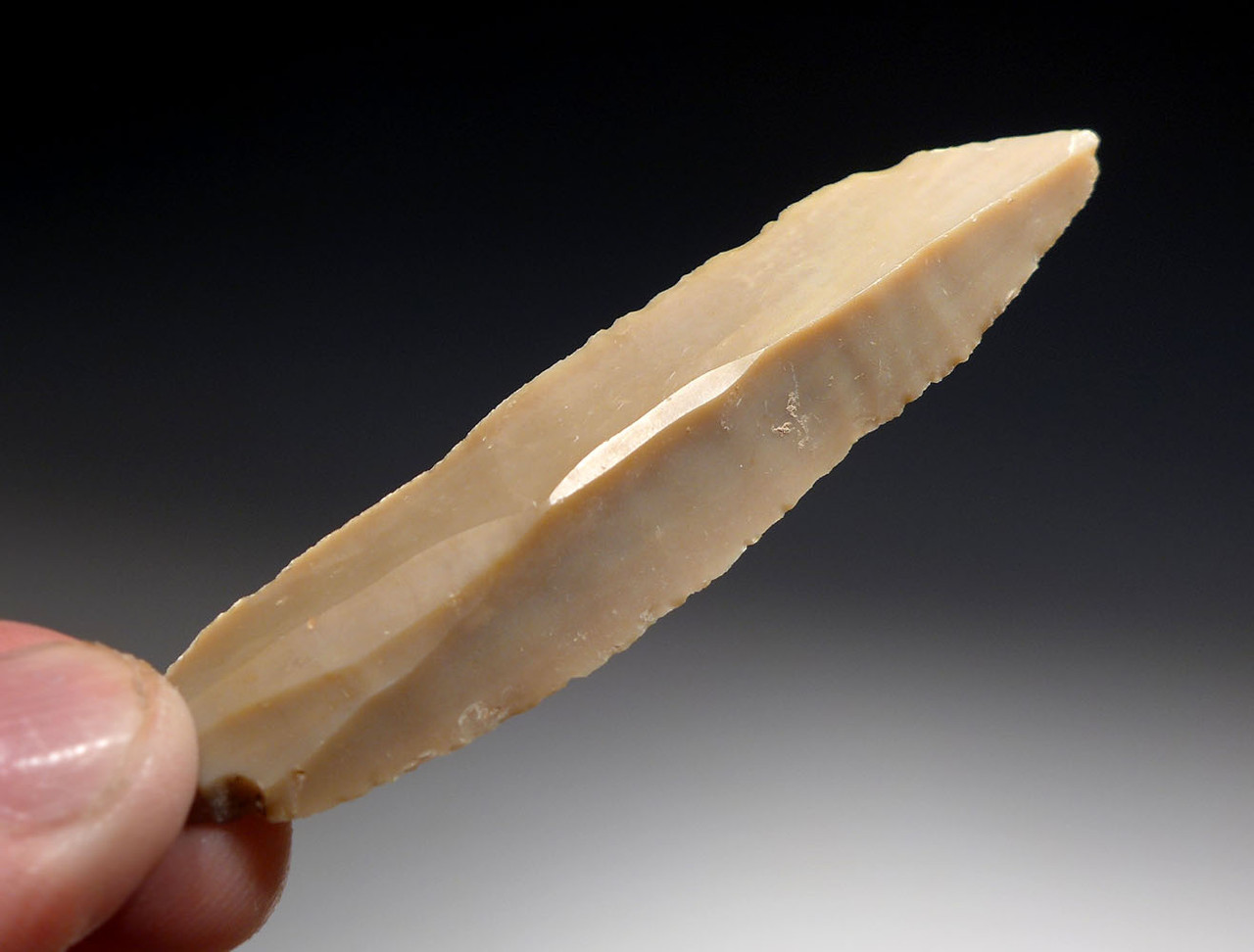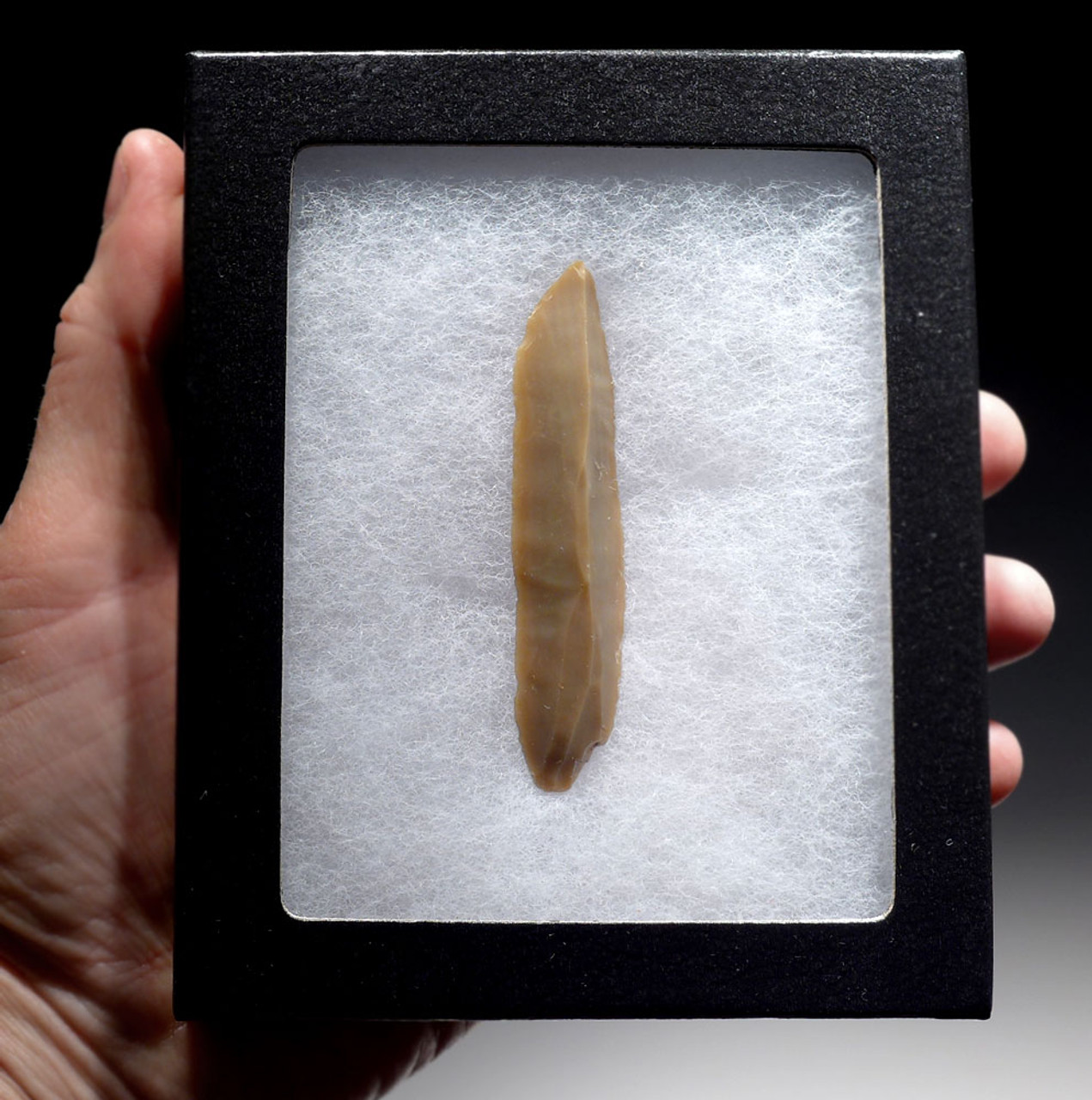Product Description
Normally never seen offered for sale, this is a very rare flint BLADE from the Neolithic Period of Jordan, in the Middle East. We acquired less than 10 specimens many years ago from a private collection and once sold, we will never be able to offer these again as such Neolithic artifacts from the Middle East must come out of old private collections as these have due to export bans. Out of the 10 pieces, this was by far, the largest and nicest! This is the first and only time we have ever had any access to such rare Neolithic stone tools. This core-struck blade is complete with a tapered base and knapped point. It was masterfully fashioned by the Neolithic people of Jordan in the earliest days of the dawn of civilization.
SEE MORE MIDDLE EASTERN NEOLITHIC TOOLS
HISTORY
The oldest evidence of hominid habitation in Jordan dates back at least 200,000 years. Jordan is rich in Paleolithic (up to 20,000 years ago) remains due to its location within the Levant where expansions of hominids out of Africa converged. Past lakeshore environments attracted different hominids, and several remains of tools have been found from this period. The world's oldest evidence of bread-making was found in a 14,500 years old Natufian site in Jordan's northeastern desert. The transition from hunter-gatherer to establishing populous agricultural villages occurred during the Neolithic period (10,000–4,500 BC). 'Ain Ghazal, one such village located in today's eastern Amman, is one of the largest known prehistoric settlements in the Near East. Dozens of plaster statues of the human form dating to 7250 BC or earlier were uncovered there and they are among the oldest ever found. Other than the usual Chalcolithic (4500–3600 BC) villages such as Tulaylet Ghassul in the Jordan Valley, a series of circular stone enclosures in the eastern basalt desert−whose purpose remains uncertain–have baffled archaeologists.
 US DOLLAR
US DOLLAR
 EURO
EURO
 AUSTRALIAN DOLLAR
AUSTRALIAN DOLLAR
 CANADIAN DOLLAR
CANADIAN DOLLAR
 POUND STERLING
POUND STERLING












